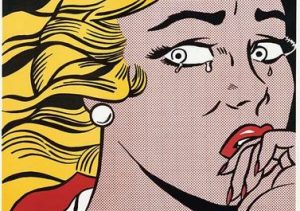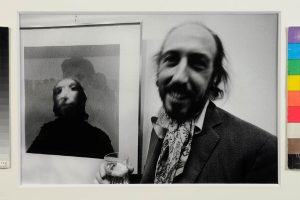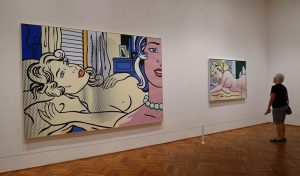Pop art is an art movement that emerged in the 1950s and flourished in the 1960s in America and Britain, drawing inspiration from sources in popular and commercial culture. Different cultures and countries contributed to the movement during the 1960s and 70s.

Image source: https://en.wikipedia.org/wiki/Crying_Girl#/media/File:Crying_Girl_(lithograph).jpg
Since making its colorful debut in the 1950s, Pop Art has remained a prominent artistic movement. Thanks to the innovations of well-known masters like Andy Warhol, David Hockey, and Keith Haring, the one-of-a-kind genre marked the end of modernism and celebrated the onset of contemporary art.
What is Pop Art?
Pop Art first “popped” up in post-war Britain and America. Primarily characterized by an interest in popular culture and imaginative interpretations of commercial products, the movement ushered in a new and accessible approach to art. Ranging from quirky to critical, the pieces produced by Pop artists in the 1950s and 1960s commented on contemporaneous life and events.

Image source: https://en.wikipedia.org/wiki/Pop_art#/media/File:Cheddar_Cheese_crop_from_Campbells_Soup_Cans_MOMA.jpg
In addition to the unique iconography itself, the artists’ treatment of the subject matter helps to define the genre. Renowned for its bold imagery, bright color palette, and repetitive approach inspired by mass production, the movement is celebrated for its unique and recognizable style.
How it started
Emerging in the mid 1950s in Britain and late 1950s in America, pop art reached its peak in the 1960s. It began as a revolt against the dominant approaches to art and culture and traditional views on what art should be. Young artists felt that what they were taught at art school and what they saw in museums did not have anything to do with their lives or the things they saw around them every day. Instead they turned to sources such as Hollywood movies, advertising, product packaging, pop music and comic books for their imagery. In 1957 pop artist Richard Hamilton listed the ‘characteristics of pop art’ in a letter to his friends the architects Peter and Alison Smithson:

Image source: https://search.creativecommons.org/photos/1726bb81-6ffb-4fd8-a865-d5aee05e922d
Pop Art is: Popular (designed for a mass audience), Transient (short-term solution), Expendable (easily forgotten), Low cost, Mass produced, Young (aimed at youth), Witty, Sexy, Gimmicky, Glamorous, Big business
Modernist critics were horrified by the pop artists’ use of such ‘low’ subject matter and by their apparently uncritical treatment of it. In fact pop both took art into new areas of subject matter and developed new ways of presenting it in art and can be seen as one of the first manifestations of postmodernism.
American Pop VS British Pop
Although they were inspired by similar subject matter, British pop is often seen as distinctive from American pop.
In the United States, pop style was a return to representational art (art that depicted the visual world in a recognisable way) and the use of hard edges and distinct forms after the painterly looseness of abstract expressionism. By using impersonal, mundane imagery, pop artists also wanted to move away from the emphasis on personal feelings and personal symbolism that characterised abstract expressionism.

Image source: https://search.creativecommons.org/photos/c4124417-eb3a-44ed-817f-127070886d37 by Lori L. Stalteri
In Britain, the movement was more academic in its approach. While employing irony and parody, it focused more on what American popular imagery represented, and its power in manipulating people’s lifestyles. The 1950s art group The Independent Group (IG), is regarded as the precursor to the British Pop art movement.
After Pop art
Pop art would continue to influence artists in later decades, with artists like Warhol maintaining a larger-than-life presence within the New York art world into the 1980s. Pop fell out of favor during the 1970s as the art world shifted focus from art objects to installations, performances, and other less tangible art forms. However, with the revival of painting at the end of the 1970s and in the early 1980s, the art object came back into favor once again, and popular culture provided subject matter that was easy for viewers to identify and understand. One of the leading figures of the Neo-Pop movement is Jeff Koons, together with the Japanese Takashi Murakami.

Image source: https://www.flickr.com/photos/tomspix/6059855238 Author:Tom Ipri
Info source: https://www.britannica.com/art/Pop-art https://www.tate.org.uk/art/art-terms/p/pop-art https://mymodernmet.com/what-is-pop-art-definition/ https://www.theartstory.org/
